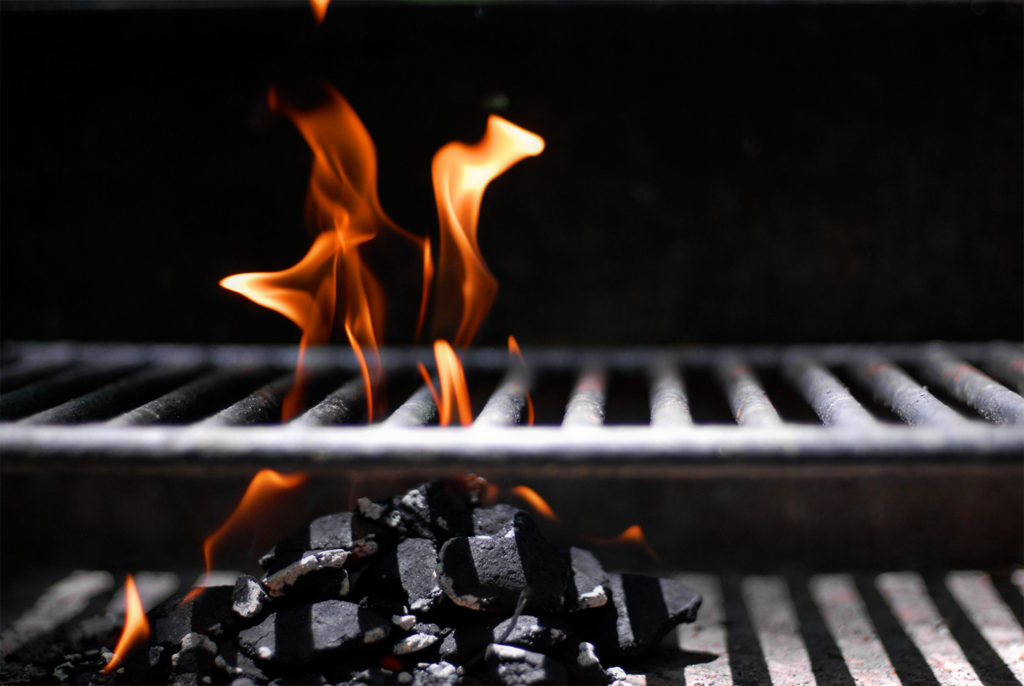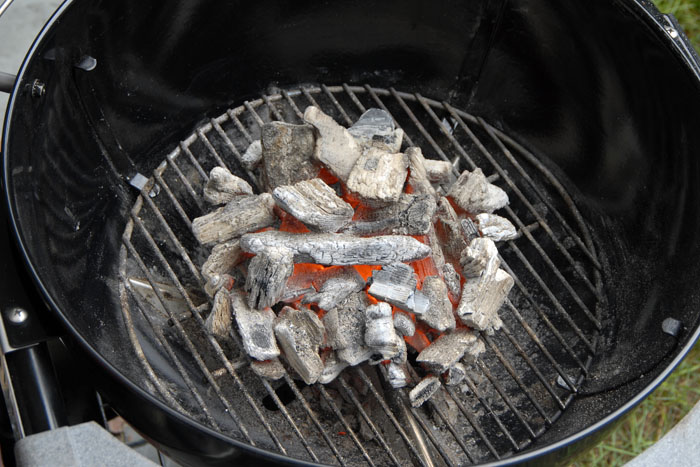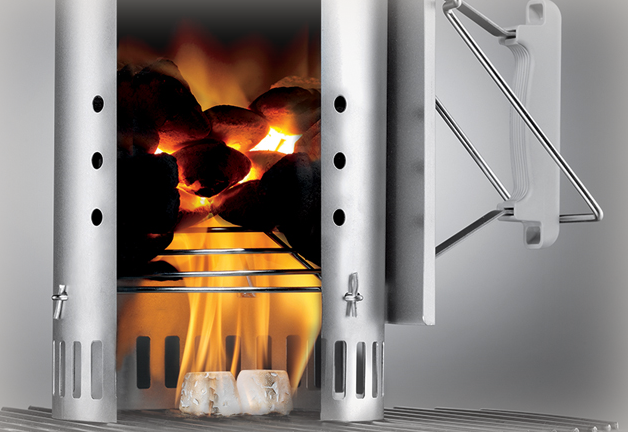No matter what you grill, barbecue, or smoke, pure, clean flavors should be your ultimate goal. And when you are using a charcoal-style grill, your choice of fuel has a dramatic impact on your flavor outcome.

For most people, buying charcoal is not a high-involvement purchase. Usually, it requires a trip to the grocery or home improvement store to pick up a bag of whatever is on hand. Some may prefer lump charcoal, while others have a preference for briquettes. And that’s about as far as it goes.
But that’s fundamental—like picking wine because it is either white or red, not because of its origin or vintage.
Today, choosing the right charcoal has become far more refined. That is due in large part to the Internet. Review sites and user forums are full of first-hand experiences and reviews for anyone interested doing a little digging to unearth valuable information, tips, and recommendations.
Charcoal Reviews
One of the most prominent sites in this area is NakedWhiz.com which has an extensive database of charcoal reviews, FAQs, ratings, and links to charcoal manufacturers. And, for those seeking higher inspiration, there is an essay on the “Tao of Charcoal.”
A major part of the site’s value is that its reviews are not limited to national brands, but include a large number of brands that are only available on a regional basis or through mail-order.
Here you will find reviews of the usual and unusual, including such specialties as mesquite charcoal, sugar-maple charcoal, coconut briquettes, Mayan lump charcoal (from super dense Central American oak), and Kiawe—or “luau”—charcoal from Hawaii.
The authoritative nature of the site’s reviews is underscored by the consistency and thoroughness of the review process and reports. Think of it as the Consumer Reports of charcoal.
Types of Charcoal
In the most general sense, charcoal can be broken in to 2 categories:
- Lump charcoal
- Briquettes
Lump Charcoal

Lump charcoal is the purest form of charcoal, made from charred wood and nothing else. Common characteristics of lump charcoal are:
- Lights fast
- Burns very hot; burns faster than briquettes
- Leaves little ash
- Allows better heat control
Briquettes

With the exception of instant-light briquettes, regular pillow-shaped briquettes do not contain any petroleum products. They are a combination of charred-wood ingredients, as well as such non-woody ingredients as sodium nitrate, starch, and—what most people find objectionable—borax.
Borax is a naturally occurring mineral and salt frequently mined in areas that have had volcanic activity. Though largely associated with laundry detergent, borax has myriad uses as a food additive, insecticide, curing agent for snake skins, and—surprisingly—fire retardant. It will also plug a leak in your car’s radiator.
Borax is used to help released the formed briquettes from their molds.
Compared to lump charcoal, traditional briquettes:
- Light slower
- Burn longer and at a more consistent temperature
- Leave more ash
- May impart a chemical smell and/or flavor
The biggest trend in briquettes nowadays are “flavored” briquettes that include sawdust from such woods as mesquite, apple, hickory, etc., into the recipe.
Also available are instant-light briquettes which are infused with lighter fluid, which can impart off-odors and off-flavors.
CAUTION: Never, ever use liquid lighter fluid in combination with instant-start briquettes.
As a result of consumers clamoring for a more natural, chemical-free way to cook on a grill, manufacturers are now beginning to offer more varieties of “pure” charcoal that contain no objectionable ingredients, including no borax.
The briquette market is further fragmented by new specialty types, including “professional” and “competition” grades that make claims for burning longer, so they are ideal for long burns in a smoker for brisket or pork butt, for example.
What Charcoal to Use & When
So let’s look at it this way:
- Lump charcoal = hot and fast
- Briquettes = consistent heat over a longer burn
So, lump charcoal is ideal for grilling with direct heat, for things like burgers, hot dogs, and sausages, as well as steaks and chops 3/4 inch thick or less.
Briquettes are ideal for when you are cooking large pieces of meat—grill-roasting or smoking a whole rib roast or whole chicken over indirect heat, for example—that require extended cooking times of an hour or more.
Starting the Ideal Fire

Chimney Starter, image courtesy of Weber Grills
One method that employs the best of both worlds involves using a chimney starter. After loading the bottom with paper, fill the coal chamber about 1/3 of the way with lump charcoal, then fill it to the brim with briquettes. When you dump the coals into your grill, the briquettes will be on the bottom and the lump on the top.
This is a good set up for when you want a hot fire that burns for a long time. It is best for a fire that will have a peak burn time of 2-3 hours. If you want a hotter fire of shorter duration, simply increase the ratio of lump to briquettes, and vice versa for a fire that burns slower but longer.
Exotics
For those looking to build a better mousetrap—or at least one that is different or more authentic—there are exotic fuel selections.
Bincho Tan
Charcoal is a central element of Japanese culture, so it is not surprising that charcoal making and refinement has been elevated to the stature of science, art, pharmacology, and religion. Just as the Eskimos have 200+ words for snow, the Japanese have myriad ways of creating charcoal and using it in everyday life and devotion.
Bincho Tan charcoal, the most prized in Japan, would fall into the lump category, although it burns like a combination of lump and briquette: very hot (to 1,000°F+) for a very long time. Hotter than even mesquite, Bincho Tan is ideal for professional kitchens with wood-fired grills.
Bincho Tan comes from three different types of oak cut in differing lengths and about 1-2 inches in diameter. It is called “white charcoal” because of the light-colored ash it leaves. When the Bincho Tan sticks are pulled from the kiln, the char is very dense and hard. Tapping two Bincho Tan sticks together produces a bright metallic crack, instead of a woody thud.
Expect to pay $10-25 per pound for White Bincho Tan. With various grades of Bincho Tan, and depending on the length of the stick, it is a good idea to shop around for the quality and price that best suits your needs.
One online resource that has an encyclopedic inventory is www.korin.com.
Thaan
Pok Pok Thaan is a product from Thailand, created by Chef Andy Rucker as a lower-cost alternative to Bincho Tan. As briquettes are molded from various ingredients, Thaan is extruded into logs that very closely mimic the best qualities of Bincho Tan—burns hot, burns long, produces low ash, and emits high, sustained heat.
All that, but at a lower cost: $9 for 5 pounds. Click here for more information.
Pimento Wood
Pimento wood is essential to authentic jerk and other Jamaican cooking.
It is used as logs sticks, chips/flakes, berries, leaves, and charcoal. The wood is from the Jamaican tree that bears allspice berries, a focal component of the jerk flavor profile.
Pimento wood charcoal is very dense and burns twice as long as lump charcoal. However, through some international wranglings, pimento wood charcoal is very scarce, only occasionally available, and expensive when it is.
A great resource for all things related to pimento wood is www.pimentowood.com.
What type of charcoal do you prefer? What meat/wood pairings do you prefer to use? Have you ever tried a flavored or exotic type of charcoal? What affect did it have on the flavor?



Leave Your Response